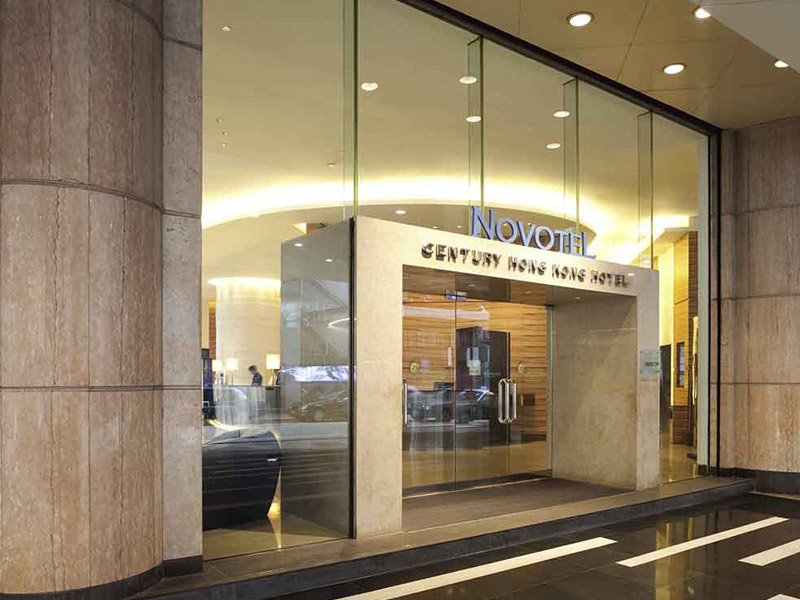8 a.m. to 5:30 p.m.
Big Data For Media Conference
Where Data, Artificial Intelligence, Audience and Revenue Intersect
The conference themes: The global conference inspires participants to create Big Data and Artificial Intelligence strategies, and apply next-generation data analytics in order to engage audiences and grow revenue.
The audience: The conference is aimed at media and advertising executives and data practitioners.
Thomson Reuters
Citibank Plaza Icbc Tower
3 Garden Rd
Central, Hong Kong
8 a.m. to 9 a.m.
Networking registration and coffee
9 a.m. to 9:20 a.m.
Welcome and Overview
Session 1: 9:20 a.m. to 11:20 a.m.
The power of Big Data and Artificial Intelligence as a Media and Advertising Strategy
Big Data and Artificial Intelligence are the next digital opportunity, and media companies and agencies must invest to compete with industry giants like Facebook, Alibaba, Baidu, Tencent and Google, which are all investing heavily in AI. You will hear from media companies that are investing in the future of their companies by driving their Big Data and artificial intelligence strategies, thereby enabling audience engagement, personalisation, targeting, product development, efficiencies and revenue-making.
9:20 a.m. to 10:00 a.m.
Keynote
How the data-driven, Audience-First strategy drives more engagement and revenue
After more than a decade into its data-driven operation, the Financial Times has a tried-and-true mantra: The audience-first strategy pays off. Troves of audience behaviour data inform content and advertising targeting, new product development and ultimately, drives revenues. Audience usership data allows the FT to accurately predict subscription churn and possibly reverse the customer’s decision to cancel. The audience strategy is a concerted, companywide effort, and is part of the fabric of the FT and its owner, Nikkei. Tom Betts will detail the FT’s successful audience-first strategy.
10:00 a.m. to 10:35 a.m.
.
How Alibaba’s burgeoning AI-driven advertising business innovates
China-based Alibaba has become the world’s largest retailer, with US$485 billion in gross merchandise volume, beating Walmart’s $482 billion in GMV in 2016. Xuemei Gu, Alibaba’s head of Alimama, Alibaba Group’s advertising business unit, will explain the search, recommendation and advertising ecosystem at Alibaba. She will explain how machine learning drives hundreds of millions of sales per year with 400 million users, 15 million stores and 100,000 brands. Alibaba gathers hundreds of data points on its each of its users’s shopping interests, and leverages insights into purchase intent and emotional understanding in order to drive higher click-throughs through targeting advertising and recommendations in real time.
10:35 a.m. to 11 a.m.
Networking break
11 a.m. to 11:35 a.m.
The question on everyone’s minds: Can data & technology drive revenue?
Xiaoqun Clever, Chief Technology & Data Officer and member of the Group Executive Board @ Ringier, Switzerland
The industry is going through tremendous disruptions led by social media platforms and technology companies. The shift has diminished media companies’ control of content distribution and revenue share. In response, media companies are buying data and digital businesses to diversity their portfolios in order to mitigate the commercial risk. Is Merger & Acquisition only sufficient to build the sustainable growth for the future? Where is the money? Where does this path lead us?
Xiaoqun will share with us how Ringier priortises data and technology as an enabler to build a eco-system strategy around content platforms and market places; how Ringier is finding ways to grow revenue by taking back control of its own data, by implementing its own profiling engine leveraging artificial intelligence. Xiaoqun will also describe Ringier’s revenue-making, data-driven partnerships with alliance partners, and reveal the Single-Sign-on and Content marketing strategies. Ringier is a family–owned, multi-national media enterprise based in Switzerland and operating in 16 countries in Asia, East Europe and Africa. How does Ringier confront with the revenue challenges?
11:35 to 12:20 p.m.
Panel discussion
12:30 to 1:30 p.m.
Lunch
Session 2: 1:30 p.m. to 3:45 p.m.
Data analytics as a foundation for the future
The fundamental building blocks of any Big Data and artificial intelligence strategy are strong audience analytics and personalisation practises. The experts will talk about best practices in the media and agency businesses, and how analytics is the gateway to product development, targeted campaigns, and revenue-making.
1:30 p.m. to 2 p.m.
Key approaches to Reaching Millennials using data analytics
The News Lens is a 4-year-old news media platform startup with 7 million unique Millennials users in Taiwan and Hong Kong and across Asia. The News Lens has leveraged their stockpile of audience data to make business decisions such as product, content and talent development, and has pivoted on strategic decisions with audience knowledge they otherwise would not have known without data. Chung will describe some key decisions made by its wealth of audience data.
2 p.m. to 2:30 p.m.
Big Data Analytics at Shoe-string Budget.
HT Media Group is quickly becoming a data-driven media company, one step at a time. Sebo will discuss the HT Media Group’s analytics-focused culture, technology and training that has enabled significantly improved audience performance, and some very useful tips for the beginners.
Among the topics he will discuss:
- Getting a grip on long-tail content performance and monetization
- Overcoming the challenges in transforming print mindset to digital
- Building a subscription business with data, identifying loyal users
2:30 p.m. to 3 p.m.
How SCMP harnesses data, mines insights and generates data-driven decisions
The 114-year-old news organisation, South China Morning Post, is undergoing a digital transformation. After Alibaba Group acquired the news media company last year, the SCMP revolutionised the foundation of its modus operandi, guided by big data and analytics. Lee is now spearheading the legacy media’s big data road map with an expanding team of data scientists and analysts. He will shed light on SCMP’s data strategy which focuses on making audience data actionable: leveraging audience data from across media platforms to generate insights into news consumers, and to build new products and refine existing products. Under the premise of experimentation, this virtuous cycle is tasked to create deeper engagement with SCMP’s readers, growing readership and engagement.
3:00 p.m. to 3:30 p.m.
Networking break
Session 3: 3:30 p.m. to 5:20 p.m.
2017 is the year for monetising data-driven advertising
It’s one thing to collect audience data and segment audiences. It’s imminently more powerful to leverage these data for personalisation, recommendation engines, ad targeting and (business- and audience-facing) product development. 2017 was the year of driving revenue from data and artificial intelligence operations. The presenters will inspire with their data-driven advertising projects and methods.
3:30 p.m. to 3:55 p.m.
How artificial intelligence algorithms improved open rates and revenues in UDN.com’s newsletter business
United Daily Group in Taiwan sends out hundreds of thousands of targeted news and entertainment newsletters each day. UDN uses machine learning to analyse its open rates and drive higher revenues for the company and advertisers, with case studies. Anson will talk about UDN’s new journey into artificial intelligence, and how they plan to use technology to grow their revenues now and in the future.
3:55 p.m. to 4:20 p.m.
How News Corp. Australia has purpose built its data department to be data-commercialisation driven
News Corp. worldwide has a rich history of strong data strategies. King will describe how News Corp Australia leverages data for advertising and other revenue, and how their strategy is designed to directly benefit from the company’s stockpiles of consumer data.
4:20 p.m. to 4:45 p.m.
Three-Step Data Process to Data-Driven Revenue Nirvana.
In order to drive audience traffic engagement and revenues, DB Digital has lived by a three-step process to revenue success by leveraging their data-driven strategy and practices. First, segment the audience in order to target ads using algorithms and artificial intelligence; second, drive user engagement by leveraging the insights collected from users; and third, analyze and exploit social media usage patterns to driven engagement and click-through rates. Bhaskar.com receives 40% of its traffic from social media. Gyan also will talk about how DB and agencies work together to target DB audience segments. DB Digital is the digital arm of India’s Dainik Bhaskar, the fourth largest newspaper in the world. The website garners billions of page views per month, thanks to a variety of data-driven best practices.
4:45 p.m. to 5:20 p.m.
Panel discussion
The future of revenue-making is exploiting data and artificial intelligence techniques. The panel will discuss technologies and strategies within reach for any media or advertising company. Here’s what the next few years will look like in the Asia-Pacific advertising landscape.
5:30 p.m. to 6:30 p.m.
Break for Gala Set-Up
6:30 p.m. to 9:30 p.m.
Big Data for Media “BIGGIES” Awards Gala

Thomson Reuters
Citibank Plaza Icbc Tower
3 Garden Rd
Central, Hong Kong
8:25 a.m. to 8:40 a.m.
Session 4: 9 a.m. to 10:10 a.m.
Keynotes: The data strategies
9 a.m. to 9:35 a.m.
How artificial intelligence and Big Data have revolutionized the Washington Post
The Washington Post has built a culture of experimentation, leverages artificial intelligence and big data for audience engagement and revenue making. Product development is core to the mission of the Washington Post. While content is king, it is equally important to get right a multitude of product attributes: Design, consistency, stability, speed and feature sets. According to Prakash, you can have the best content in the world, but if the product isn’t there, the adoption, usage and engagement doesn’t occur. When developing each new product, the devil is in the details: These can remove the friction of usage by improving user interface with improved design and color palette, decrease load times to fractions of a second, and in general, “reducing the cognitive overhead,” he said. Prakash will inspire the audience about how the Washington Post has adopted a discipline of AI-driven product development for audience engagement and revenue-making.
9:40 a.m. to 10:10 a.m.
Data-driven campaigns a driver of Facebook’s revenue growth
Facebook owes their growth and market share, in large part, to targeted, data-driven advertising campaigns, orchestrated by teams of data specialists. Ivan Xia will explain Facebook’s meteoric growth in advertising sales, fueled by data precision. Facebook generated US$27 billion in global online revenues in 2016, more than 15% of all online advertising revenues. Facebook has 5 million advertisers worldwide in April, up from 4 million in September 2016. Half of its top countries of usership are in Asia: 2, India; 4, Indonesia; 6, Philippines; 7, Turkey; 8, Thailand. Ivan will describe how Facebook gathers data and leverages it for their advertising business.
10 a.m. to 10:40 a.m.
Networking break
Session 5: 10:40 a.m. to 12:30 p.m.
Data transformation: How data is changing the agency and media advertising landscape
Agencies and Media companies are leveraging data for audience segmentation, targeting and revenue. Three case studies will lay out the strategy and best practices of revenue-making, data-driven campaigns. This session will inspire advertising and media companies to exploit data-driven technology and join forces to create successful, lucrative campaigns.
10:40 a.m. to 11:10 a.m.
Publisher consortiums: A model for competition against market leaders?
Around the globe, premium publishers and broadcasters are struggling to compete for share of growing digital advertising revenues versus the global digital giants. Premium ad exchanges offer a way for publishers and advertising companies to effectively compete. Sibois will discuss the challenges and opportunities of building a data-driven advertising network from scratch. The presentation will address the challenges of cooperating and driving revenues from data and inventory across several projects in APAC and beyond.
11:10 a.m. to 11:40 a.m.
Transforming media and advertising businesses with AI
TVB, the first wireless commercial television station in Hong Kong, has leveraged Big Data and artificial intelligence to engage with their viewers. IBM Watson, the foremost brand in the world to pioneer artificial intelligence strategies for businesses, worked with TVB to innovate its data and AI processes. Samson Tai has been Chief Technologist for the IBM Innovation Network in Hong Kong for 25 years. Tai will discuss the importance of the development of AI and Big Data best practices in media and advertising businesses today.
11:40 a.m. to 12:10 p.m.
Video advertising: How AI has enabled more insightful and efficient campaigns for Unruly
Artificial intelligence is enabling more precise targeting in video advertising campaigns, and therefore more effective campaigns. Greg will present case studies of precision-targeted campaigns, including their newest targeting technology, emotional testing and targeting. Unruly EQ and Unruly Custom Audiences are the new tools to give advertisers the data they need to maximise the emotional, social and business impact of their video ads. Unruly is owned by NewsCorp., which publishes the Wall Street Journal, National Geographic among other titles around the world. Greg will discuss the importance of its media company relationship in the success of Unruly’s campaigns.
12:10 p.m. to 1 p.m.
1 p.m. to 2 p.m.
Lunch
Session 6: 2 p.m. to 4 p.m.
The future of data: Artificial Intelligence: Easy ways for media companies and advertising agencies can get started in natural language processing, predictive analytics, machine learning and more.
The Ripple Effect: How MediaCorp uses artificial intelligence to predict content virality
Short for Real-time Interests, Participation & Popularity Learning Engine, Ripple is specifically designed to address existing gaps of off-the-shelf enterprise analytics tools and help answer some frequently asked questions of our audiences. For example:
- Which articles are likely to trend in the next 72 hours?
- Who read this article?
- What is the demographics profile of our readers?
- Where did they go next?
- What are the trending themes or topics?
Editors can log in to Ripple to find out which stories are trending, and make promotions and placements decisions accordingly, thereby accelerating the popularity of trending stories. Ripple users also can drill down into demographics, breakdown and location of audience members, as well as how the article was shared on social platforms or bookmarked. Kok Sung will discuss other AI-driven projects at MediaCorp.
2:25 p.m. to 2:50 p.m.
Creating AI-enabled media products that people love
Artificial intelligence is a necessary ingredient to creating engaging digital media products . AI will empower news media companies to deliver the right content, to the right users, in the right way. Ong will share his insights on AI being the backbone of a new generation of news media products. He will draw references and best practices from Silicon Valley, where he was based before relocating to Hong Kong recently. Before the SCMP, his stints included Lyft, 500 Startups, OMGPOP and Skillshare, a New York-based education startup he co-founded.
3:15 p.m. to 3:40 p.m.
Apple Daily’s AI-driven product development
Apple Daily in Hong Kong and Taiwan are developing products driven by artificial intelligence, such as their Restaurant Recommender Bot. Apple Daily’s Eat & Travel Weekly (ETW) has been a trustworthy and popular restaurant ratings publication for 20 years. Apple Daily’s data science and product development team developed the restaurant bot to give ETW mobile users dining ideas through “conversations” with the bot. The bot searches the extensive restaurant database, and gives the users recommendations based on preferences.
3:15 p.m. to 4 p.m.






































